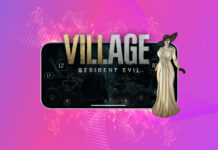If you’re a gamer, or just somebody who likes to play the occasional game on your iPhone, you’ve seen them; game splash screens. They tell you that, yes, your are indeed playing the game that you selected a few seconds ago on your iPhone home screen, and they tell you who made the game, and if you’re unlucky, they’ll also tell you who the person was who fetched coffee for the developers, who paid them and who walked their doggies.
I’m exaggerating of course, but in my opinion game splash screens need to die!
The reason why they exist is a pretty simple one: brand awareness. Companies want you to remember who made that great game you love playing in every spare minute you have. They want you to remember the fun you have with it and associate it with their name; so when you see another game by the same company on the App Store, you’ll be more inclined to buy it.
One of the ways to produce brand awareness is by repetition, which every person who has seen one feature film on TV will know: During every commercial break you see ads for the same products. While commercials are generally annoying when you just want to sit down and watch a movie, it makes sense for the advertisers, because you have to sit through them — well, you really don’t, since you can always get up and grab a new drink in order to miss the ads. People basically accept that they are there, because on some level they realise that these commercials pay for the shows and movies they watch.
But with games it’s a different matter. Showing splash screens when a game starts keeps a person from the thing she or he wants to do: playing the goddamn game. When the ad becomes a hindrance and one you cannot ignore, one you have to wait through, it’ll make you angry over time. This is even worse when you’ve already given the company money for the game (I’m deliberately ignoring “free”, ad-supported and freemium games in this article and focusing on paid games).
Let’s show you a few examples of particularly bad game splash screens:
Real Racing 2 HD
As you can see — or maybe even have experienced — this game has four splash screens, and only after viewing each and every one can you start the game:
- Picture of the game name; not skippable, more than two seconds
- Video with the developer’s logo; skippable after about one second
- Video of the game; skippable after about one second
- Picture of the game name, which becomes the loading screen; more than two seconds
LEGO Harry Potter: Years 1 – 4
You get five screens with this game followed by a short loading sequence and then you can start of the game:
- Picture of the Warner games logo; not skippable, about two seconds
- Picture of the LEGO logo; not skippable, about two seconds
- Picture of the Tt Games logo; not skippable, about one second
- Picture of the Tf Fusion gaming engine logo; not skippable, about one second
- Warner Brothers licensing information; not skippable, about three seconds
A few more examples without pictures:
Need For Speed: Hot Pursuit
- Splash screen; not skippable, about three seconds
- Video; skippable after about five seconds
- Splash screen of a safety notice; not skippable, about three seconds
Infinity Blade II
- Video, showing multiple companies; not skippable, twelve seconds
- Video with an animated logo of the game’s name; not skippable, eight seconds (doubles as loading screen)
Auditorium
- Splash screen; not skippable, about three seconds
- Loading screen
In these examples the time before the player can start to enjoy the game ranges between seven and twenty seconds, just so she or he can be shown a company logo over and over and over again. Game splash screens have existed since video games were first created and gamers on PCs and consoles have accepted that, because with these — what some call — ‘serious games’ you sit down to play for more than a few minutes, so a few seconds won’t matter to you. But with the advent of the Wii and even more so the proliferation of iOS devices as portable game consoles, people increasingly play so called ‘casual games’. These you start on your daily train commute or while standing in line at the grocery store — to name only a few situations. You play them to spend time on something fun that you otherwise would’ve spent waiting. In these and other situations, ten seconds of loading time becomes annoying.
As consumer behaviour researchers will tell you, negative experiences with a product are cumulative and lead to a negative attitude towards a brand that is hard to overcome by advertising and even better experiences in the future.
There are positive example of course.
Fruit Ninja
This game has only one splash screen that doubles as the loading screen, and after that the game starts. This casual game starts fast and is great for a quick round of fruit slicing when you have a few minutes to kill. Other casual games such as Astronut, Cut the Rope and Jetpack Joyride have one or maybe two screens of which one is a loading screen indicating to the player that the fun will start shortly.
Galaxy on Fire 2 HD
This game has three splash screens:
- The company logo; skippable
- The logo of the game engine; skippable
- A loading screen after which the game starts
The other “serious games” — where a quick startup might not be essential — such as Ash (a Zelda style RPG), Death Rally (a top down arcade racer) and Deadlock (an online multiplayer shooter) don’t make the player wait through splash screens that aren’t skippable.
If splash screens have to be there, they should at least not annoy the customer more than necessary and there are ways to do them right:
- Show splash screens, videos and licence information only during the first start-up, or
- Make these introductory screens deactivate-able by the user, or
- Make them skippable, especially if there are multiple screens, or
- Make the splash screen(s) double as a loading screen for the game (even Microsoft managed to do this during the installation process of Windows operating systems), or
- Combine multiple splash screens into one, like in the example below, or
- Combinations of the above.
In general game studios and developers shouldn’t make their customers wait, just to self-advertise. Apple has built their devices (especially iOS devices) so they are responsive, fast and don’t force long waiting times on the user. The same should hold true for games, apps that are there to give the user enjoyment. A bad user experience can limit the enjoyment a gamer takes from the application and might even mar a company’s image in the long run.
What do you think about game splash screens? Tell us in the comments or on Twitter @macgasm






